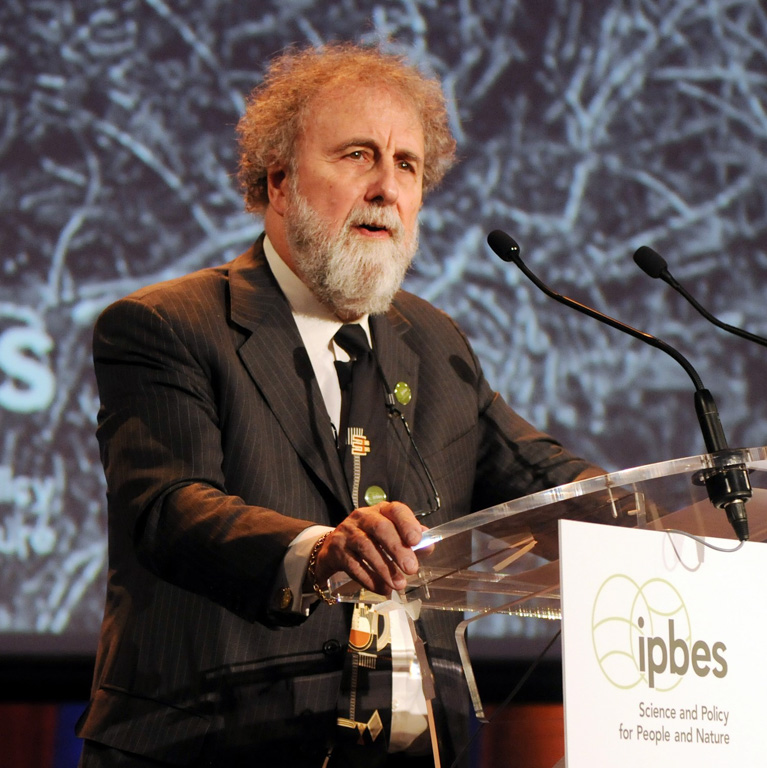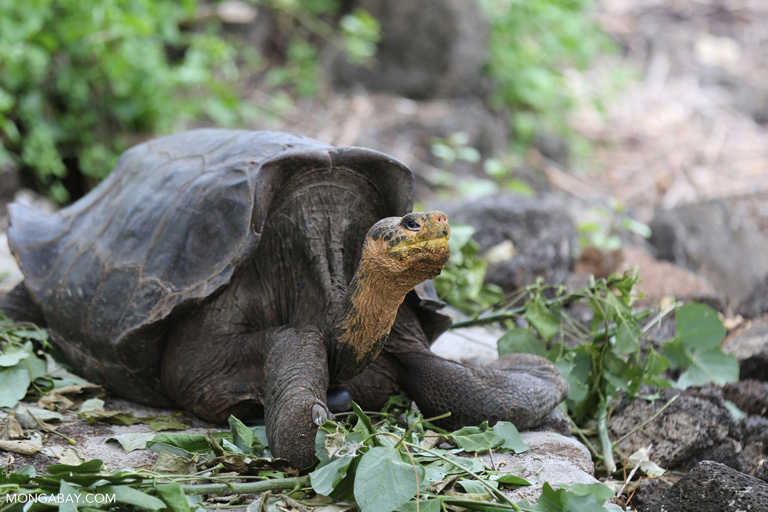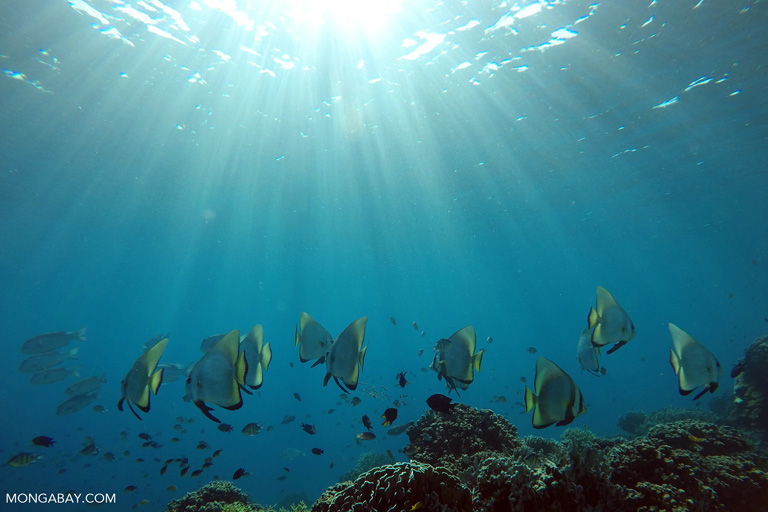- The World Bank and IMF meetings from Oct. 14-20 will include discussions on protecting biodiversity and the importance of investing in nature.
- A recent U.N. report found that more than 1 million species of plants and animals face extinction.
- In a conversation with Mongabay, Robert Watson, who chaired the Intergovernmental Science-Policy Platform on Biodiversity and Ecosystem Services that produced the report, discusses the economic value of biodiversity.
The World Bank and the International Monetary Fund are holding their annual meetings this week, Oct. 14-20, in Washington, D.C. Amid the discussions around jobs, poverty reduction and value chains, one of the talks will center on a seemingly unusual topic for the bankers, economists and finance ministers in attendance: biodiversity.
Myriad species of plants, animals and other forms of life support valuable services on which people and economies rely, ranging from medicines and food to clean air and water. But according to a recent report from the United Nations’ Intergovernmental Science-Policy Platform on Biodiversity and Ecosystem Services, or IPBES, the threat of extinction looms for as many as 1 million species of plants and animals.
That makes now the time to invest in protecting this “natural capital,” says Robert Watson, an environmental scientist who until recently helmed the IPBES. Not only will stemming the loss of global biodiversity benefit the world’s poor who depend on these services for daily survival — a significant ethical issue, to be sure, Watson pointed out. But bolstering protections for the wide range of life on Earth is also critical to the global economy, as well as its ability to ride out the future shocks that a changing world may bring.
“Protecting biodiversity is more than an environmental issue,” he said. “It is a development and economic issue.”
Mongabay spoke with Watson ahead of his Oct. 17 talk at the World Bank-IMF meetings.

Mongabay: Your presence this week seems to signify that there’s a shift, that bankers and finance ministers are paying attention to the global biodiversity crisis. Would you agree with that?
Robert Watson: Yes, without any question. I was in New York a couple of weeks ago at the [United Nations climate meeting]. During that week, the World Economic Forum got together what they call [the Nature Champions], and they committed to writing a really good report about both financing and evolution of the economic system to make sure that we can conserve, protect, [and restore] biodiversity. So there seems to be a very strong interest in both the finance sector and the business community at large.

Why do you think that is, and why now?
While climate change has been the big environmental issue that everyone’s looked at, over the last few years, the finance sector, the business community, as well as governments, of course, have an ever-increasing interest in biodiversity. And I think the [IPBES] global assessment, which we produced in May, got incredible coverage all around the world. There are many businesses that depend on biodiversity, depend on nature. Obviously, the agricultural sector, that’s a no-brainer. But also, power plants [and] aluminum smelting plants require water. Many, many businesses rely on nature.
Secondly, many businesses have a footprint on nature. I think that as the world is recognizing we need to be more sustainable, many businesses realize that they need to limit and minimize their footprint. That then brings, of course, the finance sector, who should be asking themselves, when they make a loan, will a change in climate or a loss of biodiversity, undermine the loan? And secondly, effectively, I think there is now a real demand for sustainability. And therefore, there’s an incentive to find sustainable projects in biodiversity, sustainable fisheries, sustainable agriculture, sustainable forests, et cetera. At the end of the day, it makes good business sense.

The big headline from the IPBES report was the million species facing extinction. Those are stark terms. But one thing that was less emphasized in the media was the decrease in the diversity of crops and livestock species that we rely on. How dependent are we on biodiversity?
One of the things that’s happened is agriculturalists across the world are more and more focused on a small number of genetic species with high yields. Yet, in the long term, especially with things such as climate change, we need to be absolutely sure that we have a wide range of genetic variability of different plants and animals in case they have to adapt to change in environmental conditions. Luckily, many of the newspaper stories also did cover that we are really transforming our forests, our mangrove swamps, our grasslands, et cetera. And I think the key issue is that biodiversity is not just an environmental issue. It’s fundamentally an economic issue. It’s got both market and non-market economic value. There are many of these ecosystem services like controlling the climate, controlling pollution, controlling floods [and] purifying water which don’t have a direct value in the marketplace, but have huge non-market value as well as a lot of social value.
If we lose biodiversity, and of course, if we change the climate, they both affect food security, water security [and] human health. Unfortunately, when you lose biodiversity, it tends to be poor people in poor countries who depend on biodiversity. There are examples around the world where a lack of resources or a loss of natural resources has led to tension, conflict [and] migration. It’s obviously an ethical issue that, one, we shouldn’t destroy biodiversity. Two, it’s ethical because typically, it’s the rich people in the world who have caused the problem. Poor people suffer, and it’s future generations that will suffer even more.
I think governments — I’ve heard many ministers say this — realize now that climate change and biodiversity are interrelated issues. And they’re far more than environmental issues. I think the recognition they have economic implications, development [and security] implications, has raised it up. From a private sector standpoint, more and more of the public, at least middle class who can afford it, are demanding more sustainable goods. And therefore there is a market for those that can afford it for more sustainably produced goods. So it makes sense for both a government perspective and a private sector perspective.

Can you give us a sense of what your key messages of your talk will be?
I’m going to point out that biodiversity is under threat due to human activity. The first [driver] is land use change. The second one is exploitation. In the oceans, it’s overexploitation of fisheries. And the third one at the moment is climate, followed by pollution and invasive alien species. But I will also say climate change is likely to be as or more important than the other drivers in the coming decades. Hence, we’ve got look at both of these things together basically.
So I’ll talk about, what are the drivers for change? I point out that, by not dealing with that biodiversity loss, we will be undermining many of the U.N. Sustainable Development Goals between climate change and biodiversity. They threaten food security [and] water security. There are gender issues. There are security issues. If you want to meet the Sustainable Development Goals, we do need to address both climate change and the loss of biodiversity.
I’ll point out then that to deal with biodiversity, we need more inclusive governance structures. We need governments to work with the private sector, work with the NGO civil society. We need multi-sector planning. One can’t just think of an agricultural policy. One has to say, if I’m going to do something on agriculture, what are the effects on biodiversity? Or what are the effects on water? If you’ve got an energy policy or technology, what are the implications for biodiversity? We can’t do one sector at a time. And we need to evolve the economic system. We need to get rid of the perverse energy, transportation and agricultural subsidies [amounting to] over a trillion dollars a year. We need to eliminate those because most of them adversely affect biodiversity and stimulate climate change.
Secondly, we need to bring the value of nature into national accounts. Three, we should embrace things like the circular economy. And we need to provide short-term incentives for sustainable production.
It’s not saying we should be getting rid of capitalism, definitely not. It’s not saying we should get rid of using GDP as a measure of economic growth. But we need to complement GDP. While it’s a measure of economic growth, it is not a measure of sustainable economic growth. Obviously the time for action is not only now. It was 20, 30 years ago, but we need to act basically

I understand you’re part of the Dasgupta Review in the U.K.
Yeah, [Partha Dasgupta] was asked by the chancellor of the exchequer to do a review to evaluate the value of biodiversity. What he will try and show is that for an individual country, you should be looking at what are your ecosystems, your biomes, and what do they contribute in natural capital? What do they contribute to the market? What do they contribute in non-market value?
Some social scientists don’t like this. They say that commoditizes nature. I personally disagree with that. I think it’s very important to show these ecosystems do have economic value, even if it’s not all in the marketplace, because that allows the environment minister to talk to the agricultural minister, the energy minister, the treasury minister. Protecting biodiversity is more than an environmental issue. It is a development and economic issue.

It seems like it’s difficult to do this at a global scale. Would you say that it would be advisable for countries like the U.S. or other major players on the world economic stage to do these assessments for themselves?
I would argue that, to the degree it can be done, all countries should try as much as possible. I heard quite often as we did the [IPBES] global assessment that Africa recognizes that one of the most important things they’ve got for potential economic growth is their natural capital. They’ve got a wealth of forest, wetlands, et cetera.
The question is, how could you — I’ll use the IPBES term — “sustainably” use them? How could you use or exploit these systems without destroying them? In other words, how do you sustainably use a forest or a wetland or coral reef or mangrove system? So I will argue that it’s probably as or more important for poorer countries to do this evaluation because natural capital could be a larger part of their economy than a rich country like the U.S. So I don’t think it’s just an issue of rich countries doing these sort of evaluations. The challenge, however, is fairly simple. Do we have the data to do good analyses? Countries like the U.K., many in Europe [and] the U.S. have probably a much better understanding of their ecosystems, than a number of developing countries.

We’re I think less than a year away from the Convention on Biological Diversity meeting in China next year. Do you expect the value biodiversity to be a larger topic there?
I would hope it would be part of the conversation. I think the meeting in China next year is very, very important. Governments met in Japan in 2010 and came up with a 20 Aichi Targets, [which are] a wide range of targets and goals to protect biodiversity [and] to raise awareness of biodiversity. One of them talks about incorporating natural capital into international accounts. To be quite honest, as we said in IPBES global assessment, we’ve made some progress on some of them, but almost none of the targets will be met, unfortunately.
In my opinion, some of those are really good targets, and they could expand out for later 2025, 2035. I won’t be part of that dialogue, but I would hope that governments would talk about the economic values, the social values, the development values of why we do need to protect biodiversity, why we need to restore some of the degraded land. I would hope at that meeting, and at the Convention on Climate Change only a month later, they will also talk about how they need to think about climate change and biodiversity together, because these two issues are almost inseparable. Climate change affects biodiversity. Loss of biodiversity affects climate change.
Also, when one tries to think about solutions of how to mitigate climate change, people talk about nature-based solutions, such as using bioenergy, that bioenergy could potentially be good, but it could also under certain circumstances actually lead to a loss of biodiversity. And it can also threaten food security. So one has to look at the synergies and trade-offs of some of these response options for climate change and biodiversity. So, I would hope both of the big conventions would recognize the interrelationship between the two issues and that they need to think about them together.
Banner image of a blueberry grasshawk in Indonesia by Rhett A. Butler/Mongabay.
John Cannon is a staff writer at Mongabay. Find him on Twitter: @johnccannon
Editor’s note: This interview was edited for clarity and length.
FEEDBACK: Use this form to send a message to the author of this post. If you want to post a public comment, you can do that at the bottom of the page.
